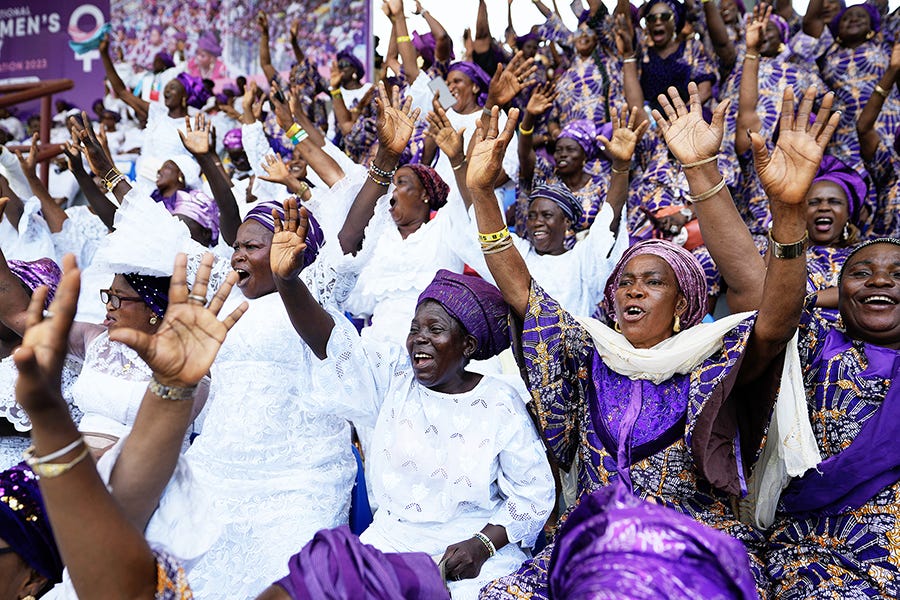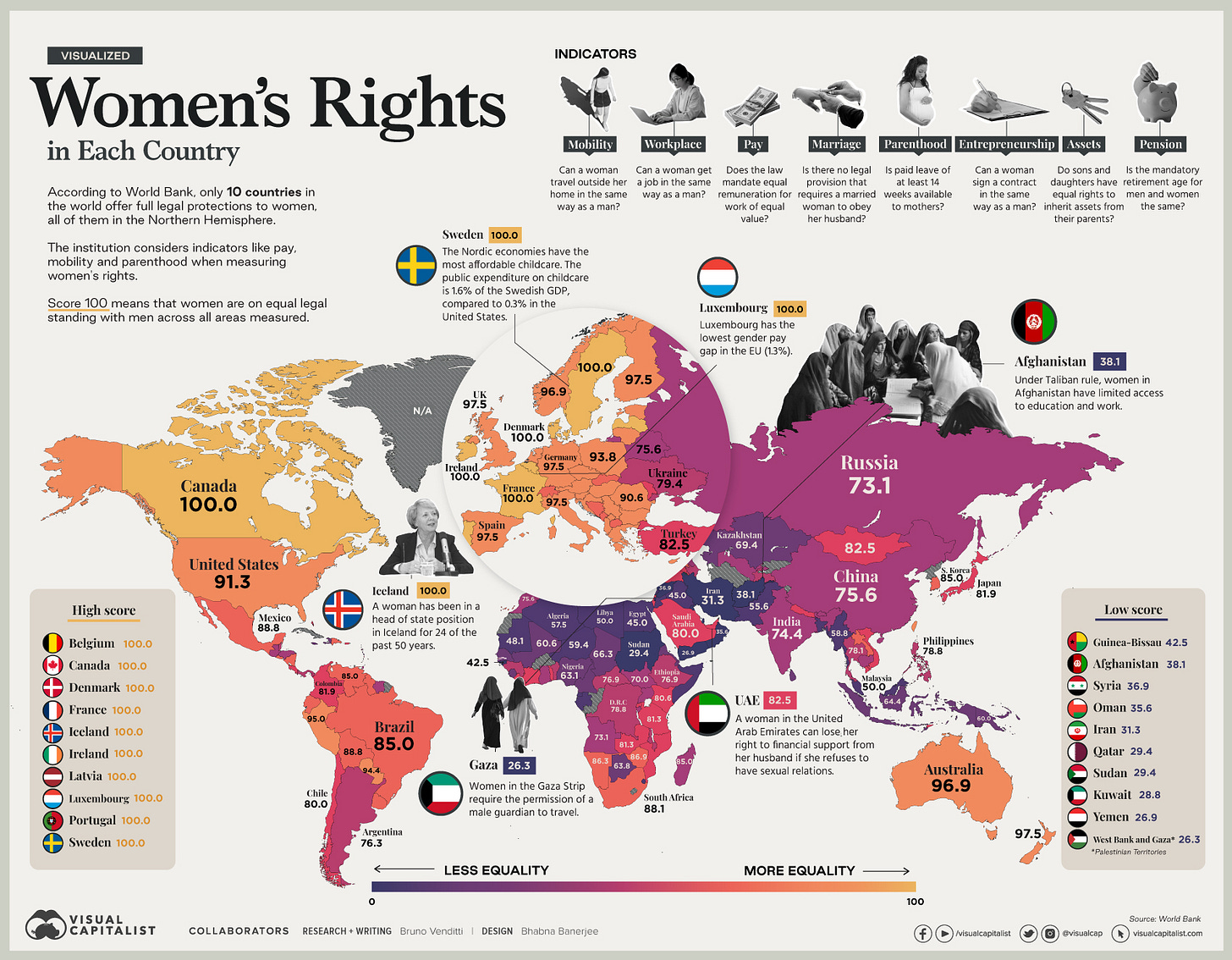
With the burdens of knowledge and prescience etched on his face, Secretary-General António Guterres told the UN General Assembly what all the members knew and most have had a hand in creating. “Gender equality is growing more distant,” he said. “On the current track, UN Women puts it 300 years away. Progress won over decades is vanishing before our eyes.”
The women of Afghanistan, Pakistan, Democratic Republic of Congo, Iran, Chad, Mali, Algeria, Oman, Benin, Qatar, Morocco and India—the world’s dozen most dangerous countries for women, in descending order—would agree. The force-veiled of Saudi Arabia, Afghanistan, and Iran, who can be jailed, beaten and killed for violating a patriarchal dress code, would agree. The women of every sub-Saharan country, subject as they are to rape during every conflict from major war to village skirmish, would agree. Every woman from a country which gives a father legal ownership of the children she bears would agree. Every woman from a country where she can be married off at age 9 would agree. But in most cases, their voices are silenced. Speaking out brings arrest—accusations of prostitution, blasphemy, and apostasy—honor murder, beatings and rape. Everywhere there is pressure against the progress women have made towards equal rights. In these worst countries, women’s lives are marked by constant fear, abuse and loss.
In this article, we will deal with three of the worst offenders.
Afghanistan
The Taliban regained control over the country in August of 2021, having sat at a bargaining table with diplomats from many countries—lying through their teeth about how they’d really, really, really changed in their attitudes toward women. At this writing, here’s where things stand:
According to Human Rights Watch, the Taliban have instituted a witheringly long list of policies to prevent women and girls from exercising fundamental human rights of “expression, movement, work, and education affecting virtually all their rights, including to life, livelihood, shelter, health care, food, and water.”
The Taliban’s all-male leadership has banned women from all levels of governance and from holding any senior civil service positions—which means they cannot act as judges. Women are prohibited from traveling or leaving their homes without a male chaperone and have been banned from almost all forms of work. All women in Afghanistan are now force-veiled and usually required to wear a burqa. As adherence to these new statutes was slow in coming, the Taliban decided to punish male family members for any lapse committed by a woman. Compliance was instantaneous.
Yesterday, at Kabul University, women sat in protest on the first day of classes. KU now has an all-male student body and all-male faculty. The UN said the Taliban’s actions may qualify as a crime against humanity. The UN also notes that Taliban have used excessive force against protestors, arbitrarily detaining protestors and their families. They have beaten and tortured many.
Pakistan
Violence against women and girls in Pakistan continued in the last year as Pakistan notched around 1,000 so-called “honor” killings. Incidences of rape, acid attacks, forced marriage, child marriage, domestic violence, and selling girls to settle the debts of male relatives were widespread.
UNICEF estimates that 18.9 million Pakistani girls are married off before age 18 and 4.6 million before they turn 15. These young brides are forced into dangerous early pregnancies spaced far too closely together. Women from minority religious groups are especially vulnerable to forced marriage.
Pakistani women are vulnerable to multiple reproductive health challenges in general and have the highest maternal mortality rate in South Asia.
Country discussions continue after this graphic.
________________________________
The great French feminist Simone de Beauvoir once said that although women never want to hear this, no woman can be truly free who does not have her own money. This graphic from Visual Capitalist maps Women’s Rights around the world, including economic access, political power, access to health care, and legal protections.

________________________________
The Democratic Republic of Congo
Despite being endowed with a seemingly inexhaustible wealth of natural resources, the DRC ranks next to last in the world indices for development. It is also subject to almost endless wars amongst its 100 armed factions. In the north and east, the Rwanda-backed M23 rebels, allied to the Congolese Army and several armed tribal groups, are wreaking havoc for the population in general—and women in particular. This makes the DRC ground zero for siege rape—”allowed” rape of women by fighters in times of war—and it is estimated that one million Congolese women have been violently sexually assaulted. Court sanctions against perpetrators are almost nonexistent.
In addition, 52% of Congolese women are survivors of domestic violence, 39% report having being threatened or injured, and 27% of women in DRC are victims of female genital mutilation. Early marriage is common, with reports indicting that 39% of women in their early twenties were married or in a union before the age of 18. Kidnapping and sexual trafficking at the hands of armed tribal and uncontrolled government groups is widespread throughout the country but most prevalent in areas besieged by war.
Social customs also make the DRC especially dangerous for women. Abortion is illegal except in cases of rape, incest or fetal abnormality. A women is not allowed to use birth control without her husband’s consent, making her and her unborn children more susceptible to AIDS. In compatible demographic groups, women are four times as likely to contract AIDS as men, and in-country, 71.79% of all AIDS patients are women. However, 78% of men living with AIDS are on treatment; only 58% of female AIDS patients receive the same healthcare.
Further, food insecurity drives prostitution in the DRC. Women are not allowed to eat with men, and many are allowed only men’s leftover food. If men eat everything on their plates, women have no food to eat at all. And since a woman is not allowed to open a bank account, accept a job, obtain a commercial license, or rent or sell real estate with her husband’s permission, obtaining money for food outside a male’s control is almost impossible.
The maternal mortality rate in the DRC has improved in the last 15 years, but it still stands at 473 per 100,000 births, making the DRC one of the most dangerous places in the world to have a baby.
________________________________
A special report on Iran—and the other eight “worst offenders” of women’s rights worldwide—will come in the following weeks.
Sources:
UN Women, Office of the Secretary-General of the United Nations, Human Rights Watch, The Guardian, Women Under Siege, and Visual Capitalist.

